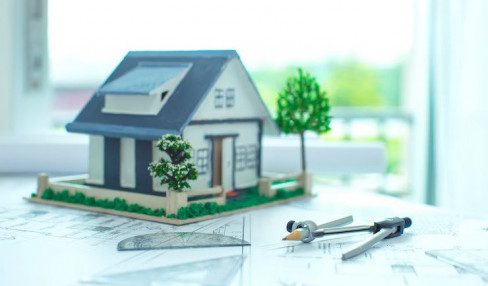What Is The Average Cost Of Living In Austin, TX For A Family?
21 December 2023
5 Mins Read

toc impalement
Austin, Texas, a city that’s rapidly evolving into a hotspot for families and professionals alike, has become synonymous with a lifestyle that perfectly blends urban energy with suburban comfort.
Understanding the ‘cost of living in Austin TX’ is pivotal for anyone contemplating a move to this dynamic city, renowned for its unique culture, thriving economy, and vibrant social scene. As the state capital, Austin offers a rich tapestry of experiences, from its famous music scene to its burgeoning tech industry, making it a magnet for those seeking a high-quality, yet affordable life.
This burgeoning interest has led to a significant influx of new residents, making services like ‘top movers in Austin‘ increasingly sought after as more people choose to call this city their home. The ‘cost of living in Austin TX’ plays a crucial role in this trend, as it remains relatively reasonable compared to other major metropolitan areas, yet offers an enviable quality of life.
With its diverse neighborhoods, each boasting its unique charm, Austin caters to a wide range of preferences and budgets, making it a versatile choice for many.
Housing Costs
The housing market in Austin has seen a significant upsurge in recent years. As of my last update in April 2023, renting a standard two-bedroom apartment in the city can cost around $1,500 to $2,500 per month, depending on the area and amenities.
For those looking to buy, the median home price hovers around $450,000, although this varies greatly by neighborhood. These figures position Austin as a moderately expensive housing market compared to other major US cities, making Austin’s cost of living a crucial consideration for potential homeowners.
Utility Expenses
Utility costs in Austin average approximately $200 to $300 monthly for a typical family, covering electricity, water, and garbage services. This cost can fluctuate based on usage, season, and the efficiency of the home. Additionally, families should budget for internet and cable, which can add an extra $100 to $150 to monthly expenses, essential for staying connected in today’s digital world.
Grocery And Food Expenditure
Groceries in Austin can cost a family about $600 to $800 per month, depending on dietary preferences and shopping habits. The city’s diverse culinary scene also presents numerous dining options. Eating out at restaurants, a common part of Austin’s lifestyle can add significantly to monthly expenses, especially in upscale dining establishments. This aspect of Austin’s cost of living should not be underestimated when budgeting for a family.
Transportation Costs

Transportation is another critical component of the cost of living in Austin, TX. Public transportation options include buses and a metro rail system, with an average monthly pass costing around $50. However, most families in Austin rely on personal vehicles, leading to additional expenses like gas, maintenance, and insurance, which can amount to $300 to $500 monthly.
Related: Dallas Vs. Austin: Choosing The Right City In Texas
Healthcare Costs
Healthcare expenses in Austin can be a significant part of the budget. For a family, average monthly health insurance premiums can range from $500 to $1,200, depending on the plan and coverage. Out-of-pocket costs for medical visits, prescriptions, and emergencies add to the financial burden, making healthcare a notable factor in the Austin cost of living comparison.
Childcare And Education
Childcare is a major expense for families with young children. In Austin, the average cost of daycare can range from $800 to $1,200 per child per month. Educational expenses also vary, with public schools being a more affordable option compared to private schools, which can charge substantial tuition fees. These costs significantly influence the overall cost of living in Austin, TX for families with children.
Entertainment And Leisure
Austin’s rich cultural and recreational offerings, from live music venues to outdoor parks, contribute to a family’s entertainment budget. Monthly expenses for leisure activities can range from $100 to $300, depending on the frequency and type of activities chosen. This adds a layer of vibrancy to the Austin cost of living but also requires financial planning.
Clothing And Miscellaneous Expenses
Due to Austin’s generally mild climate, families may find clothing expenses to be moderate. However, seasonal variations and personal preferences can influence this cost. Additionally, miscellaneous expenses like personal care, household items, and other unforeseen costs should be factored into the monthly budget, contributing to the overall cost of living in Austin, TX.
Taxes
Texas is known for having no state income tax, which is a significant financial relief for residents. However, property taxes in Austin are relatively high, with an average rate of around 2.1% of the property’s assessed value. This is an important consideration for homeowners when calculating the Austin cost of living.
Savings And Investments
Despite the expenses, living in Austin also allows for potential savings and investment opportunities. With a strong job market, especially in the tech and business sectors, families often have the chance to put aside funds for savings and investments. A typical savings rate can range from 5% to 10% of the monthly income, although this varies greatly among individuals.
Comparison With Other Cities

When compared to other major cities in the US, the cost of living in Austin, TX is relatively moderate. Cities like New York, San Francisco, and Los Angeles have significantly higher living costs. However, when compared to smaller cities or those in less expensive states, Austin’s cost of living can appear higher.
The cost of living index, a tool that compares the relative price levels between cities, often ranks Austin as more affordable than the aforementioned major cities but more expensive than many mid-sized American cities. This makes Austin a unique blend of affordability and city amenities, attracting a diverse range of families.
Future Trends
The economic outlook for Austin continues to be positive, with a growing job market and an influx of new businesses. However, this growth could lead to an increase in the cost of living in the future. Property values are expected to rise, and with them, associated costs like housing and property taxes. Monitoring these trends is important for families planning their finances long-term in Austin.
Tips For Budgeting
Effective budgeting is key to managing the cost of living in Austin, TX. Families should track their expenses, prioritize necessities, and plan for savings. Utilizing budgeting tools and apps can provide valuable insights into spending patterns. Additionally, seeking advice from financial advisors or attending budgeting workshops can equip families with the skills to navigate Austin’s cost of living effectively.
Conclusion
Understanding the cost of living in Austin, TX is crucial for families considering a move to the city. From housing and utilities to transportation and healthcare, each aspect contributes to the overall financial picture.
While Austin offers a vibrant lifestyle and numerous opportunities, it also requires careful financial planning and budgeting to make the most of what the city has to offer.
Read Also:


















Comments Are Closed For This Article